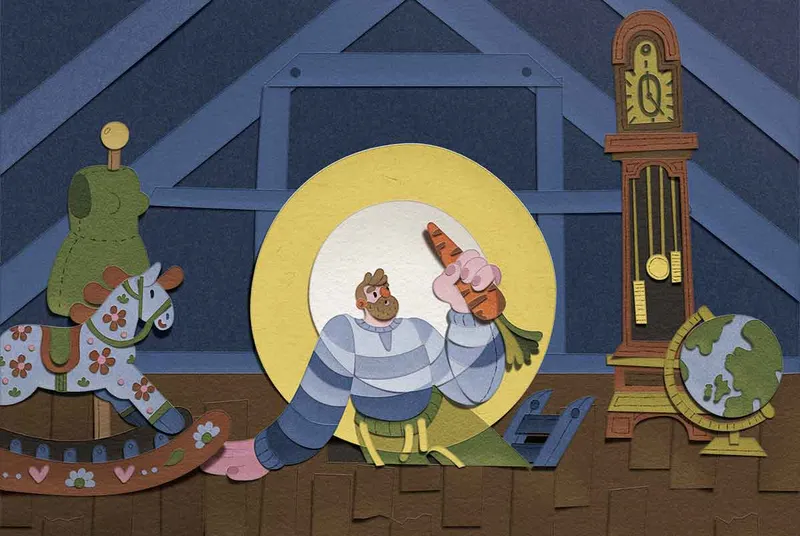Containing more than 100 million light-sensitive cells and some of the fastest muscles in our bodies, our eyes are capable of picking up everything from starlight beaming across the galaxy to the full gamut of human emotion.
But it’s in their coupling with our minds – through the approximately one million nerve fibres connecting each eye to our brains – that we gain the ability to synthesise slick visuals and interpret what’s going on around us without getting distracted or overwhelmed.
Key parts of the human eye
Pupil
It looks like a black dot but it’s actually a gap that lets light pass through to the back of your eye.
Cornea
A transparent dome at the front of your eye, the cornea refracts light, helping to direct it along the right path to the retina.
Iris
The coloured part of the eye that controls how much light gets in by causing the pupil to dilate or constrict. The iris is part of a larger structure that forms a layer between the retina and sclera.
Lens
A transparent lens that changes shape to focus incoming light on the retina.
Retina
Often thought of as the back of the eye, it’s more correctly the innermost layer that the light hits after being inverted by the lens. The retina is jam-packed with light-sensitive cells and nerve cells.
Sclera
Otherwise known as the white of the eye, the sclera is a protective, outer layer made tough by collagen fibres.
Viterous
A transparent jelly that fills the eyeball. As we get older, the consistency of this jelly becomes more liquid and progressively less wobbly.
Optic nerve
A thick bundle of nerve fibres carrying signals between each eye and the brain.
How do we see?
The simplest explanation is that what we see is a result of light entering the eyes through the cornea and lens, which direct and focus the light towards the photosensitive cells (rods and cones) in the retina.
Rods work in low light, while cones require bright light but give us colour vision. Cones provide the details at the centre of our vision, while rods are responsible for peripheral vision. Together, these cells convert light into electric signals, which travel down the optic nerve to the brain.
What we actually see, though, is as much about how our brains interpret these signals so that we can make sense of the information we’re receiving without being distracted by unimportant details. This visual prioritisation and filtering produce a ‘mental image’ that is only a representation of what is actually there.
For example, our brains prioritise faces, with the result that we’re always spotting them where they don’t exist – such as in clouds and wallpaper patterns. Our brains are also constantly processing what we see to provide a smooth visual experience, rather than giving us the effect of a shaky, handheld camera.
Recent research suggests it does this by blending together the inputs from the previous 10-15 seconds, meaning what we see isn’t necessarily a second-bysecond update, but it does give us a less hectic sense of the world.
How do our eyes compare to cameras?
It’s hard to compare because what we see isn’t made up of pixels or frames, and we’re constantly switching where we focus. It’s been suggested that our eyes have the resolution (ability to distinguish two points) of a 576-megapixel camera.
A stills camera capable of capturing 576 million separate pixels within a single image would be five times better than some of the highest resolution cameras currently on the market. However, our eyes only see with very high resolution at the centre of our vision.
So, everywhere else, the resolution is much more comparable to a standard camera. As for colours, we can only see those that fall into the small range of wavelengths visible to humans (400-700 nanometers), whereas we’ve built cameras that are capable of perceiving the shorter wavelengths of ultraviolet light (10-400 nm) and the longer wavelengths of infrared (750-15000 nm).
Within the visible spectrum, most people are thought to be able to discriminate around 10 million different shades using three types of cone cells. This system is not dissimilar to that of a camera, which combines red, blue and green pixels to capture nearly 17 million colours.
But, people with tetrachromacy have a genetic mutation that gives them an extra cone type, allowing them to see 100 times more colours, like birds and reptiles.
How does ageing affect our eyes?
Our vision deteriorates as we get older. In middle age, the lenses in our eyes become less flexible, making it harder to focus close-up, which is why many people start needing glasses for reading in their 40s and 50s. A number of age-related conditions are also leading causes of blindness.
20/20 vision

Everything looks good, whether it's close-up or away in the distance.
Glaucoma

Loss of peripheral vision, thought to be associated with increasing pressure, due to fluid build-up,
damaging the optic nerve.
Macular degeneration

Loss of central vision, caused by death of the light-sensitive cone cells in the macula – the central part of the retina.
Cataracts

General clouding of vision caused by protein breakdown and clumping in the lens. Most people will eventually develop cataracts.
Why do people have different eye colours?
Recent research suggests there are at least 61 genes for eye colour – and that’s just in European and Asian people. This means that, contrary to what we might have been taught at school, it’s not that straightforward to work out what colour eyes a child born to two blue-eyed parents should have.
(It’s quite possible, although less likely, for them to have brown eyes.) But what is it in the iris that makes it blue or brown? Well, dark irises contain more of the naturally brown, light-absorbing pigment melanin – the same pigment that gives our skin different colours.
Blue irises that contain less melanin absorb less light and instead reflect and scatter it, producing short wavelengths of light at the blue end of the spectrum. Differences in melanin levels also explain why some people have two different-coloured irises (heterochromia), usually the result of a harmless genetic mutation affecting melanin development in the eye.
Meanwhile, in babies whose eyes are blue but later turn brown, their melanin is still forming. In fact, babies were once the only humans with blue eyes, because the genetic mutation responsible for adults having blue eyes is not thought to have appeared in European populations until the last 6,000-10,000 years.
Five common eye myths

We're born with adult-size eyes
Nope. A baby’s eyes are large in comparison to its face but they’re only between one and two thirds of adult size. Eyes grow rapidly for the first year, then again during puberty and don’t stop until you’re around 20.
20/20 vision is perfect vision
Not really. It means you can read all the letters on an eye chart from a distance of 20 feet (6 metres). 20/10 vision is better: you can see details that other people can only see when they stand 10 feet (3 metres) away.
Dogs can only see in black and white
Wrong again. Dogs can see in colour but they see mostly yellows and blues. They have fewer types of the cone cells needed for colour vision compared to humans.
You can't sneeze with your eyes open
You can and it’s okay… your eyes won’t pop out of your head. This is probably another one of those things that overanxious parents came up with.
Carrots help you see in the dark
This one’s sort of true. Carrots contain beta-carotene, which we use to make vitamin A. This, in turn, is converted into pigments that we use to see in low light.
Read more: